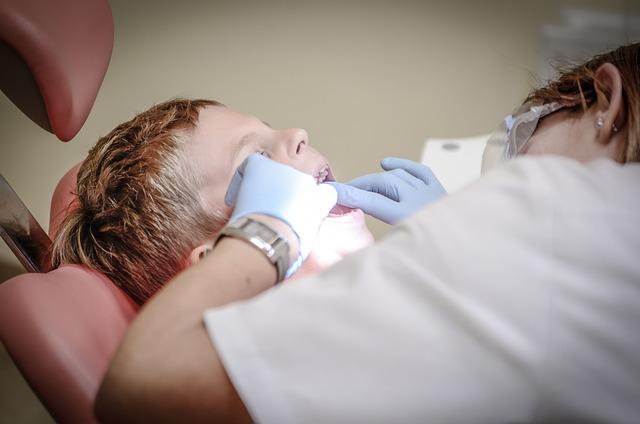Cultural Chronicles: Tooth Fairy Tales from Mexico
The tradition of the Tooth Fairy is a beloved custom in many cultures around the world, each with its own unique twist on the folklore. In Mexico, the Tooth Fairy, known as “El Ratón de los Dientes,” holds a special place in the hearts of children and families. Let’s delve into the enchanting world of Mexican Tooth Fairy tales, exploring the origins, customs, and beliefs that make this cultural phenomenon so captivating.
1. The Origins of the Tooth Fairy Tradition in Mexico
The Tooth Fairy tradition in Mexico has its roots in ancient Aztec and Mayan folklore. These indigenous cultures believed that children’s baby teeth held spiritual significance and were often used in rituals to ensure a smooth transition into adulthood. Over time, this belief evolved into the modern-day practice of children leaving their lost teeth under their pillows in exchange for a small gift from the Tooth Fairy.
In Mexican culture, the Tooth Fairy is known as “El Ratoncito Pérez” or “La Ratita Presumida,” a small mouse or rat who collects children’s teeth while they sleep. This charming character is believed to bring good luck and prosperity to the child who gives up their tooth. The tradition is a way to celebrate this important milestone in a child’s life and make the experience of losing a tooth a magical and exciting event.
Today, the Tooth Fairy tradition is a beloved custom in Mexico, with parents passing down the story of El Ratoncito Pérez to their children for generations. It is a fun and lighthearted way to celebrate childhood and create lasting memories for families across the country.

2. Cultural Significance of the Tooth Fairy in Mexican Folklore
The Tooth Fairy, known as ”El Ratón de los Dientes” in Mexican folklore, holds a significant place in the cultural beliefs of many families. This mythical creature serves as a comforting figure for children as they lose their baby teeth, offering a sense of wonder and excitement during a milestone moment in their development.
In Mexican culture, the Tooth Fairy is often depicted as a small mouse-like creature who collects children’s fallen teeth in exchange for a small gift or monetary reward. This tradition not only helps children cope with the physical discomfort of losing a tooth but also instills a sense of generosity and magic in the process.
The Tooth Fairy in Mexican folklore is a beloved and enduring symbol that bridges the gap between childhood innocence and cultural heritage. By embracing this tradition, families can pass down stories and customs that connect them to their roots while creating lasting memories for the next generation.
3. Traditional Customs Surrounding Tooth Loss and the Tooth Fairy in Mexico
In Mexico, the tradition surrounding tooth loss and the Tooth Fairy is deeply rooted in the culture. Here are some traditional customs that are commonly practiced:
- Throwing the tooth on the roof: It is a common belief that throwing a child’s lost tooth onto the roof will bring good luck and ensure the growth of a healthy adult tooth.
- Exchanging the tooth for money: Similar to other cultures, Mexican children often place their lost tooth under their pillow at night in exchange for a small monetary gift left by the Tooth Fairy.
- Celebrating with a special meal: Families may also celebrate the occasion of losing a tooth by preparing a special meal or dessert to mark the milestone in a child’s life.
These customs surrounding tooth loss and the Tooth Fairy in Mexico are cherished traditions that have been passed down through generations, adding a touch of magic and excitement to the experience of losing a tooth.
4. Evolution of Tooth Fairy Tales in Mexican Society
The Tooth Fairy tales in Mexican society have undergone significant evolution over the years, reflecting changes in cultural beliefs and practices. One notable aspect of this evolution is the transition from a traditional, folklore character to a more commercialized and modern figure. Today, the Tooth Fairy is often depicted as a friendly, magical being who exchanges lost teeth for money or small gifts, similar to the American version of the myth.
Furthermore, the influence of global media and popular culture has played a role in shaping the Tooth Fairy tales in Mexican society. With the rise of social media and digital platforms, children are exposed to a wide range of interpretations and representations of the Tooth Fairy, leading to a blend of traditional and contemporary elements in the folklore. This fusion of old and new narratives has created a rich tapestry of stories surrounding the Tooth Fairy, reflecting the dynamic nature of cultural myths and legends.
Overall, the showcases the adaptability and resilience of folklore in the face of changing times. As cultural beliefs continue to shift and evolve, so too will the stories we tell about mythical beings like the Tooth Fairy, weaving a complex tapestry of tradition and innovation in Mexican folklore.
5. How Mexican Families Celebrate the Visit of the Tooth Fairy
Mexican families have their own unique traditions when it comes to celebrating the visit of the Tooth Fairy. Here are some common practices that are observed during this special occasion:
- **Putting the tooth under the pillow**: Just like in many other cultures, Mexican children are encouraged to place their lost tooth under their pillow before going to bed. This allows the Tooth Fairy to come and leave a small gift or money in exchange for the tooth.
– **Offering a special treat**: In addition to receiving a gift from the Tooth Fairy, some Mexican families also like to leave a special treat for their child to enjoy the next morning. This could be a favorite snack or candy that the child loves.
– **Sharing the experience with family**: Celebrating the visit of the Tooth Fairy is often seen as a family affair in Mexico. Parents may share stories of their own experiences with the Tooth Fairy, creating a sense of connection and tradition within the family.
6. Unique Beliefs and Superstitions Related to the Tooth Fairy in Mexico
In Mexico, there are several unique beliefs and superstitions related to the Tooth Fairy that are passed down through generations. One interesting belief is that if a child places their lost tooth under their pillow, the Tooth Fairy will come and leave a small toy or trinket instead of money. This tradition adds an element of surprise and excitement for children who eagerly await the Tooth Fairy’s visit.
Another superstition in Mexico is that if a child accidentally swallows their tooth instead of placing it under their pillow, they must bury a small object in the ground as a replacement offering to the Tooth Fairy. This act is believed to appease the Tooth Fairy and ensure good luck and healthy teeth for the child in the future.
Furthermore, some Mexican families believe that the Tooth Fairy only visits children who have been well-behaved and obedient. This belief serves as a gentle reminder for children to take care of their teeth and follow good oral hygiene practices in order to receive a visit from the magical Tooth Fairy.
7. Comparison of Tooth Fairy Traditions in Mexico and Other Cultures
In Mexico, the Tooth Fairy tradition differs from that of other cultures in several interesting ways. One unique aspect is that instead of a fairy, Mexican children believe in a magical mouse called Ratoncito Pérez who collects their lost teeth. This tradition is deeply rooted in Mexican folklore and adds a charming touch to the experience of losing a tooth.
Another notable difference is the way in which children receive their rewards for lost teeth. In Mexico, it is common for children to receive coins or small toys under their pillows, similar to the tradition in the United States. However, in some cultures such as Spain, children might leave their teeth in a glass of water next to their bed, and wake up to find coins in place of their teeth.
Overall, while the concept of a Tooth Fairy or similar figure exists in many cultures around the world, the specific traditions and customs associated with losing teeth vary greatly. It is fascinating to explore the nuances of these traditions and appreciate the cultural diversity that exists in how children celebrate this rite of passage.
8. The Role of the Tooth Fairy in Teaching Values and Traditions to Mexican Children
Teaching values and traditions to Mexican children is an important aspect of their cultural upbringing. The Tooth Fairy plays a significant role in this process by instilling values such as honesty, responsibility, and generosity.
Through the exchange of a lost tooth for a small gift or monetary reward, children learn the importance of taking care of their oral hygiene and being responsible for their belongings. This tradition also teaches children the value of patience and the joy of receiving a reward for their efforts.
The Tooth Fairy is deeply rooted in Mexican culture and serves as a fun and magical way to pass down traditions from generation to generation. By incorporating the Tooth Fairy into their upbringing, Mexican children are able to connect with their heritage and learn valuable life lessons in a creative and engaging manner.
9. Modern Interpretations of the Tooth Fairy in Mexican Popular Culture
In Mexican popular culture, the Tooth Fairy has been reimagined in modern interpretations that reflect the unique traditions and beliefs of the country. These contemporary versions of the Tooth Fairy often incorporate elements of Mexican folklore and symbolism, providing a fresh perspective on this beloved childhood figure.
One common variation of the Tooth Fairy in Mexican popular culture is known as “El Ratoncito Pérez,” a small mouse who collects children’s teeth in exchange for a small gift. This character is deeply rooted in Mexican tradition and is a charming twist on the classic Tooth Fairy concept. Additionally, the Tooth Fairy is sometimes depicted as a mystical creature with magical powers, adding a sense of wonder and enchantment to the folklore.
Overall, these showcase the creativity and imagination of the country’s storytellers. By blending traditional folklore with contemporary themes, these versions of the Tooth Fairy bring a fresh perspective to a timeless childhood tradition.
10. Preserving and Passing Down Tooth Fairy Tales in Mexican Families
In Mexican families, the tradition of the Tooth Fairy is a cherished one that is passed down from generation to generation. These whimsical tales of a magical fairy who exchanges lost teeth for small gifts or money are a beloved part of childhood for many Mexican children.
Parents often create elaborate stories to explain the Tooth Fairy’s origins and her special connection to children’s teeth. These stories are told with great care and detail, adding to the sense of wonder and excitement surrounding the Tooth Fairy tradition.
As Mexican families continue to preserve and pass down these Tooth Fairy tales, they are not only keeping a fun tradition alive, but also creating lasting memories that will be treasured for years to come. The Tooth Fairy is a beloved figure in Mexican folklore, and her stories continue to enchant and delight children of all ages.
Frequently Asked Questions
Q: What are some traditional beliefs and customs surrounding the tooth fairy in Mexico?
A: In Mexico, the tooth fairy is known as “el Ratón de los Dientes” and is believed to take children’s teeth while they sleep in exchange for a small gift or money.
Q: How does the tooth fairy differ in Mexico compared to other countries?
A: In Mexico, the tooth fairy is often depicted as a small mouse or rat, whereas in other countries she is typically portrayed as a fairy or other mythical creature.
Q: Are there any specific rituals or traditions associated with the tooth fairy in Mexico?
A: One common tradition is for children to place their lost tooth under their pillow at night, and in the morning, they will find a small gift or money left by the tooth fairy.
Q: What is the significance of the tooth fairy in Mexican culture?
A: The tooth fairy is seen as a symbol of childhood and a way to celebrate the milestone of losing one’s baby teeth. It is also a way to teach children about generosity and the importance of taking care of their teeth.
Q: Are there any variations of the tooth fairy tale in different regions of Mexico?
A: Yes, there are regional variations of the tooth fairy tale in Mexico, with different names and customs associated with the tooth fairy in different parts of the country.
Wrapping Up
In conclusion, the cultural chronicles of Tooth Fairy tales from Mexico offer a fascinating glimpse into the rich traditions and beliefs of this vibrant culture. From the mysterious “Ratoncito Pérez” to the generous “Hada de los Dientes”, these stories highlight the importance of oral health and the value placed on childhood innocence. By exploring these tales, we can gain a deeper understanding of Mexican folklore and the ways in which it shapes the lives of its people. So next time a tooth falls out, remember the magical rituals and legends that surround the Tooth Fairy in Mexico.






